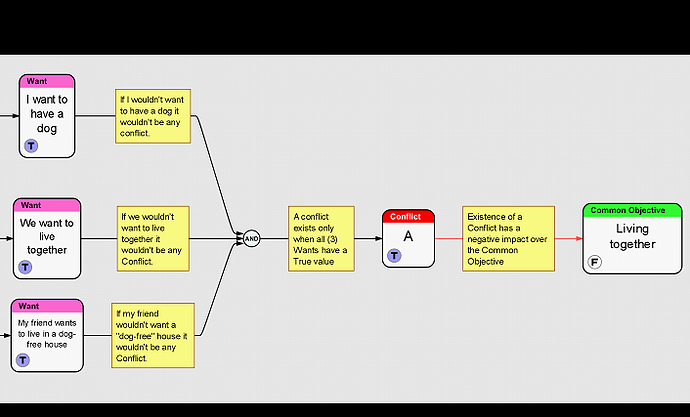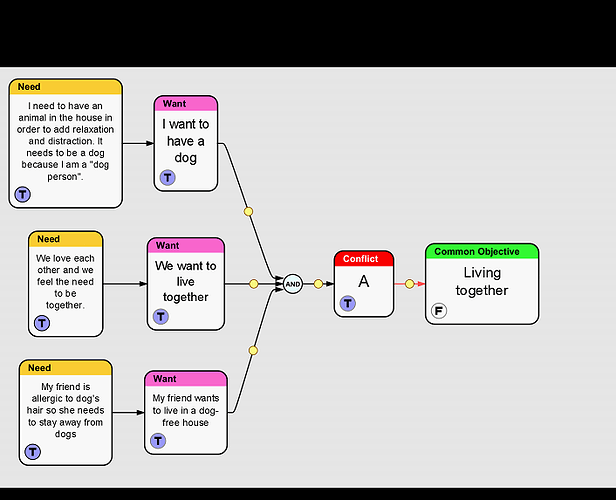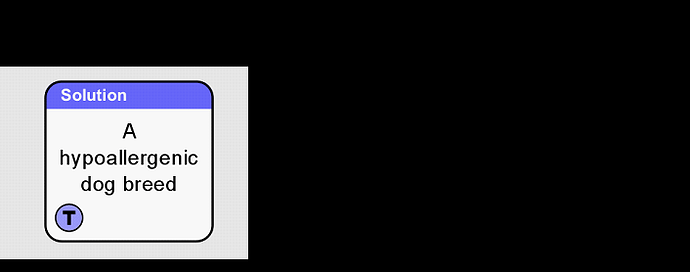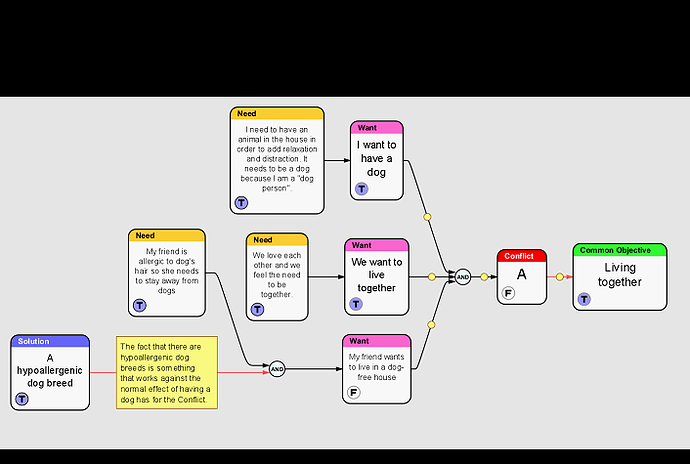I always have had problems with the “Evaporating Cloud” model for solving conflicts. I kind of understand what is trying to do, but it seems to me a bit confusing when it comes to the way it uses the edges. Maybe I am a bit too rigid in my understanding but I think inside a diagram all edges need to have the same nature. Or no particular nature at all. Otherwise, it becomes very hard to follow what the diagram is trying to accomplish.
So, I came up with my diagram when it comes to solving a conflict. I am not saying my approach is correct. That’s why I am submitting it to your judgment, here.
I’ll try to provide a thorough explanation at every step.
- Right from the beginning I want to say that the edges in this diagram mean “necessary condition”. This means that the entity before an edge is a necessary condition (cause) for the entity that follows after that particular edge.
The “story” behind this diagram goes like this:
“I have a friend I love and because of that, we want to live together. At the same time, I want to have a dog in the house because it relaxes me and I am “a dog person”. Unfortunately my friend is allergic to dog hair so she wants to live in a “dog-free” house. These things create a conflict that threatens our common objective for living together.
The solution I found (I “injected”) is that there are hypoallergenic dog breeds. If I choose a hypoallergenic dog, this choice will have a negative impact on the possibility of conflict. So I combine (use the AND junctor) my friend’s need for a “dog-free” house with the fact that there are hypoallergenic breeds of dog. The implication is that the conflict is killed and the common objective is reached.”
So, I start with the existence of the Conflict and I go backward asking the question “WHY?”
The Conflict exists because (3) Wants converge and exist in the same time. They can be two or more than three. But they need to be at least two.
If any of these Wants would not exist, then the conflict would die and the Common objective would be possible.
These (3) Wants originate in (3) particular Needs. Each one of these needs seems reasonable.
If any of these Needs would disappear the implication is that the Conflict would die out and the Common objective would be reached.
However, all these Needs remain active, so the conflict is real and the Common objective is in peril.
So, I discovered a solution: there are hypoallergenic dog breeds.
I inject this solution into the diagram, combining it with my friend’s need for a “dog-free” house. So, now I still Want a dog but it will be a hypoallergenic breed. At the same time, I need to acknowledge that a hypoallergenic breed of dog has a negative impact on the Conflict itself because it cancels my friend’s Need to stay away from any dog.
So, the Solution works against the Conflict (the emerging edge is red) and the Solution is combined (use the AND junctor) with the Need of my friend.
As long as the Solution is True, the Common objective is fulfilled (True).
This is my diagram for Conflict Resolution.
Please let me know your opinions. I’m interested in your feedback.
Thank you,
Virgil Titarenco





